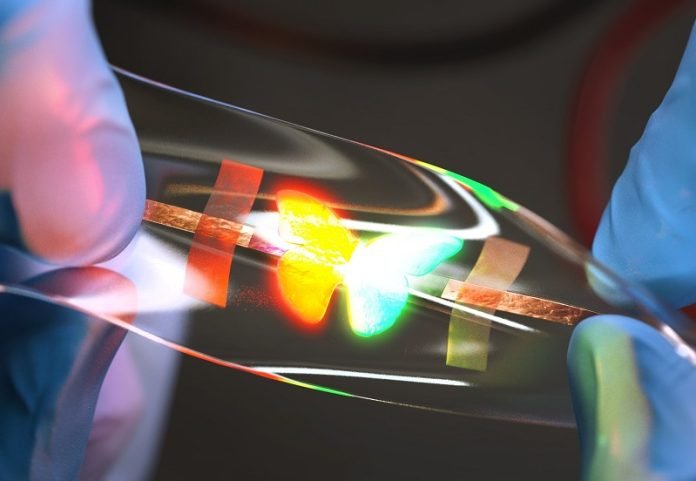
A team of South Korean researchers led by Professor KIM Dae-Hyeong from the Institute for Basic Science has made a groundbreaking development in display technology.
They have created the world’s first intrinsically stretchable quantum dot light-emitting diodes (QLEDs), a major step forward for future electronics that could include everything from advanced wearable devices to adaptable screens.
Their findings were recently published in Nature Electronics.
Traditional display technologies, such as those seen in smartphones and TVs, are generally rigid and inflexible.
While there has been progress in developing flexible displays, achieving a truly stretchable screen that maintains functionality under strain has remained a challenge. This is where the new technology from Professor KIM’s team comes into play.
Quantum dot displays are known for their excellent color quality and brightness, but until now, they haven’t been able to stretch without losing functionality.
Quantum dots are tiny particles, only nanometers in size, that light up when stimulated by electricity. However, because they are made from inorganic materials, they are naturally inflexible.
The innovation by the South Korean researchers involves embedding these quantum dots in a special elastic material that allows the display to stretch.
The key breakthrough was the development of a new composite material that includes a polymer called TFB, which enhances the overall stretchability and improves electrical conductivity, ensuring the quantum dots remain lit up even when stretched.
This new material forms a unique internal structure where TFB-rich “islands” help conduct electrical charges to the quantum dots effectively, while the surrounding elastic matrix supports extensive stretching. This setup minimizes any loss of brightness or efficiency typically seen in stretchable materials.
The performance of these new stretchable QLEDs is impressive. They can emit light at a very high brightness level of 15,170 cd/m² and operate at a low voltage.
Remarkably, the display can stretch up to 1.5 times its original size without any loss in performance. For instance, a 20-inch screen could be expanded to 30 inches while still maintaining sharp, vibrant visuals.
Furthermore, the research team has developed a high-resolution patterning technology that can be applied to these quantum dot layers, paving the way for full-color displays and intricate designs suitable for complex electronic interfaces.
This breakthrough sets the stage for a new era of electronic devices that are not just bendable but truly adaptable to various forms and uses.
The potential applications are vast, ranging from new types of wearable electronics that can conform to any part of the body, to innovative gadgets that can change size and shape as needed.
Professor KIM and his team’s research not only showcases the capabilities of quantum dots in stretchable forms but also points towards a future where electronic displays can be as flexible as the fabrics we wear.
This could revolutionize how we interact with technology, making electronic devices more versatile, durable, and suited to a range of innovative applications.



